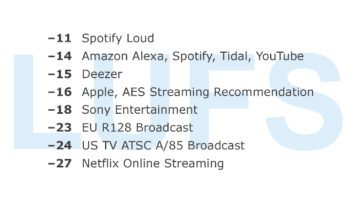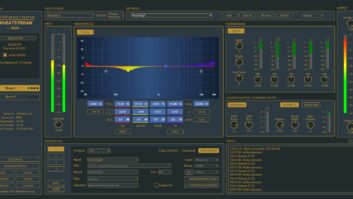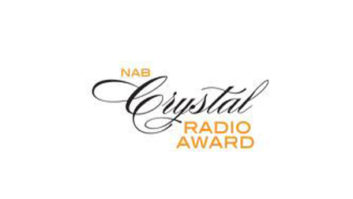 Quick, how does the loudness standard used at Spotify differ from that of public radio’s PRSS?
Quick, how does the loudness standard used at Spotify differ from that of public radio’s PRSS?
The answer can be found in a new reference list put together by RTW. The equipment manufacturer gathered info about several dozen audio delivery standards for content used by streaming and broadcast organizations.
“While aligning the perceived loudness of content in broadcast and digital delivery platforms such as Spotify, YouTube, Apple Music and more is a good initiative, one of the consequences is a wealth of new delivery standards,” it stated in its announcement. “RTW sets out to provide an overview.”
[Read: A Quality Audio Crisis in the Music Industry]
It noted that loudness standards in broadcast have been in the news for the past decade but that many new digital streaming platforms have emerged in that time. “And in recent years, the companies behind these new platforms have also started to recognize the need for recommending specific loudness deliver specifications to its content providers.”
It noted that Spotify, Netflix, Apple, Sony, Amazon, Tidal and Google (YouTube) have their own loudness delivery guidelines. “Some of them are similar in terms of Integrated Loudness (LUFS), but may vary slightly with regard to True Peak (dBTP), and then again some are simply the same.”
The Public Radio Satellite System is one of the many organizations included, as are numerous global TV industry sectors. RTW said that it found nearly 50 specifications including 35 for broadcast.
The loudness delivery specifications on the RTW page include Loudness and True Peak targets. Depending on content type and destination, parameters such as Short Term Loudness, Momentary Loudness and Max Loudness Range may also be included, it said.
RTW’s Senior Director of Product Management Mike Kahsnitz was quoted saying that the list is aimed at content providers. “For instance, if you make music and would like to submit your content to Spotify, Apple Music, Amazon Music, Tidal and Deezer, you should not just bounce one file for all of them.”
The guide is here.







